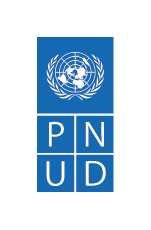Stratospheric ozone layer prevents the ingress of the harmful ultraviolet radiation (UV) to Earth’s surface and protects humankind from its adverse effects like skin cancer, and cataracts), the biosphere (e.g., inhibiting plant growth and damaging ecosystems), and physical infrastructure of the modern era (e.g., degradation of materials). Compelling scientific evidence linking ozone layer depletion with anthropogenic activity of widespread usage of chlorofluorocarbons (CFCs) and other halogenated chemicals. In an effort to have a global consensus on the need to limit these emissions the Vienna Convention for the Protection of the Ozone Layer was adopted in 1985. This was followed by the Montreal Protocol on Substances that Deplete the Ozone Layer in 1987 to regulate and eventually phase-out the production and consumption of these Ozone Depleting Substances (ODS).
The implementation of the Montreal Protocol over the last two decades has resulted in the complete phaseout of global production and consumption of a set of ODSs recognized as the most harmful for ozone layer. This has also helped in to start reversing the trend of ozone depletion. The timely resolve of the countries in 2007 to accelerate the phaseout of Hydro chloroflourocarbons (HCFCs) by 2030 would be a big leap in our efforts to restore the ozone layer, HCFCs were developed as transitional substitutes to CFCs. They have a lower Ozone Depletion Potential (ODP) as compared to CFCs. Their phaseout presents a unique opportunity to adopt alternatives that are not only benign to ozone layer but are also climate friendly.
The phaseout of ODS also helps in mitigation of GHG emissions as most ODSs are greenhouse gases few thousand times more potent than carbon dioxide. According to the Scientific Assessment Report 2010, (WMO[1], 2010) the GHG emission mitigation as a result of phaseout of CFCs and other halogenated gases specified in the Montreal Protocol is estimated at 10 gigatonnes of CO2-eq, which is about five times the emission reduction target of the firs commitment period of Kyoto Protocol (2008-2012). The accelerated phaseout of HCFCs is projected to reduce greenhouse gas emissions by about 0.5 gigatonnes of carbon dioxide (CO2)-equivalent per year averaged over 2011 through 2050. This could be augmented if the choice of alternatives is done carefully and preferentially to favour low Global Warming Potential (GWP) refrigerants.
This is expedient as the commercially available alternative to HCFC is Hyroflourocarbons (HFC)s, which do not have any impact on the ozone layer but are potent greenhouse gases and are covered under the Kyoto Protocol basket. The 2010 Scientific Assessment Panel (SAP) report (WMO1, 2010) predicts the growth of HFC related emissions to rise by at least 8% per annum from the present level of about 0.4 gigatonnes of CO2 in an unconstrained scenario. This could result in about 20% of GHG emissions coming from HFCs by 2050.
HCFC phaseout, coupled with effective implementation of policies that enhance energy efficiency of the appliances using these refrigerants, could provide both direct and indirect emission mitigation. Direct emission reduction through enhanced appliance energy efficiency could be supplemented by indirect emissions by choice of low-GWP refrigerants. Indirect emissions usually result from leakages, servicing and end of life disposals.
Most of the countries have commenced implementation of their approved HCFC Phaseout Management Plans (HPMP). This provides them with an opportunity to make the right technology choices of low-GWP refrigerants and embrace energy efficiency in full measure to reap the benefits of ozone layer protection as well as climate change. The Meeting of Parties has also been encouraging the countries to adopt such holistic policies and regulations to maxim the overall benefits from accelerated HCFC phaseout
Contributed By:
Atul Bagai
Senior Regional Coordinator
Compliance Assistance Programme
OzonAction Programme
UNEP Regional Office for Asia and Pacific UN Building, Rajdamnern Nok Avenue Bangkok 10200







